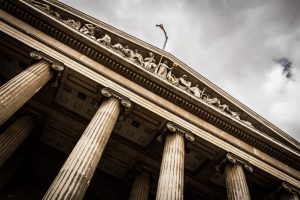In a landmark decision, the U.S. Supreme Court ruled in favor of copyright music artists, allowing the musicians to recover over ten (10) years of copyright infringement damages for a copyright infringement case which was brought within three years after discovering the infringment without any limitations based on the length of time the infringment occured.
This case reverses the three-year look back rule announced in Petrella v. Metro-Goldwyn-Mayer, Inc., 572 U. S. 663, 670. In the current case, Warner Chappell Music, Inc. v. Nealy, the US Supreme Court ruled that the three-year window applies only to when an action is commenced, not to the amount of copyright infringement damages recoverable. Once a timely claim is filed under the discovery rule, plaintiffs can seek damages for infringement occurring at any time, even beyond the three-year period.
No Separate Copyright Infringement Damages Time Frame
Nealy, a musician was in prison from 1989 through 2008 and then again from 2012 through 2015. During that time frame, his music was used in numerous songs which sold millions of copies and in popular television shoes including “So you Think You Can Dance.” Following his second prison stint, Nealy discovered Warner’s use and sued Warner Chappel for copyright infringement based upon the infringing activity which went back to 2008, more than ten years before the suit was filed. In his lawsuit, Nealy sought damages and profits based on Warner’s unauthorized use.
In response to Nealy’s lawsuit, Warner claimed that Nealy could not pursue damages which occured more then three years before suit was filed. Under the court’s prior ruling, Nealy, may have been limited to pursue copyright infringement damages dating back to only three years from the filing of the lawsuit, instead of all the way back to 2008. The Copyright Act’s statute of limitations provides that a copyright owner must bring an infringement claim within three years of its accrual. See 17 U. S. C. §507(b). Some circuits interpreted that as limiting the calculation of copyright infringement damages to only three years worth of damages.
In its ruling, the Court emphasized that the Copyright Act’s statute of limitations establishes a single time limit for filing suit, not a separate limit on damages recovery. The Court rejected the argument that damages should be capped at three years from the date of infringement, finding no textual support for such a limitation in the Act.This ruling overturns the Second Circuit’s approach, which had barred plaintiffs from recovering damages for acts occurring more than three years before filing suit, even if the claim itself was timely under the discovery rule.
Implications for Copyright Holders
The decision is a significant victory for copyright owners, allowing them to seek full compensation for past infringements, even if the infringing acts were discovered years later. Under the Court’s ruling, the statute of limitations under the Copyright Act establishes a three-year period in which the plaintiff must file suit, which begins to run once the claim accrues or is discovered. It eliminates the risk of losing substantial damages due to delayed discovery and harmonizes a split among the circuits. Copyright holders can now confidently pursue copyright infringement claims without worrying about an arbitrary damages cutoff, as long as they file suit within three years of discovering the infringement. This ruling incentivizes diligent enforcement and deters willful copyright infringement by removing limitations on potential liability.
Potential Impact on Litigation Strategies
The Court’s ruling is likely to influence litigation strategies and settlement negotiations in copyright cases. With the prospect of recovering extensive damages, copyright holders may be emboldened to pursue claims more aggressively, while defendants face increased pressure to settle or risk substantial judgments.
Additionally, the decision could reduce forum shopping, as the availability of full damages becomes uniform across circuits. Parties to an infringement lawsuit can also rely upon reliable copyright infringement damage calculations with a clearer understanding of potential exposure, providing a more informed decision prior to choosing to sue or defend against claims of copyright infringement.
In conclusion, the Supreme Court’s ruling in Warner Chappell Music, Inc. v. Nealy represents a significant shift in copyright law, empowering artists, musicians and copyright holders to seek complete relief for copyright infringement, regardless of when they occurred or were discovered. This decision has far-reaching implications for copyright litigation and underscores the importance of vigilant enforcement and compliance.
Schedule a meeting with one of our copyright attorneys to learn more about how the courts case will impact you and your business.

